Bethpage Newsgram & Mid-Island Times: Vanderbilt Cup Races through Bethpage
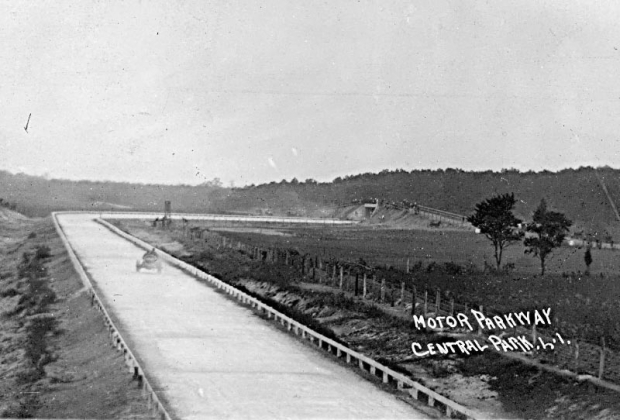
Margaret Norris has reported on this Wednesday night's special program at the Bethpage Public Library in the Bethpage Newsgram and Mid-Island Times.
Enjoy,
Howard Kroplick
Program: Vanderbilt Cup Races through Bethpage
By Margaret Norris | on October 17, 2019
Bethpage’s Central Park Historical Society and the Long Island Motor Parkway Preservation Society (VanderbiltCupRaces.com) will co-host a special program on the Long Island Motor Parkway, the 1908 Vanderbilt Cup Race and the role of Bethpage on Wednesday, October 23, 2019 beginning at 7 p.m. inside the Bethpage Public Library, 47 Powell Avenue.
The presentation is titled “Memories of the Long Island Motor Parkway in Central Park.” Attendees at the free program October 23 will be able to view aerial photos that show the Parkway in its early stages and what Bethpage and Central Park looked like over 110 years ago. The Motor Parkway, also known as the Vanderbilt Motor Parkway, was the first American road specifically built to suit the automobile.
The Long Island Motor Parkway ran through Bethpage’s Central Park starting in 1908. The William K. Vanderbilt Cup Races from 1904 through 1910 challenged American automakers to challenge European-made cars for speed, power and performance. In Bethpage the 1908 Cup Race crossed farm roads that came through Central Park before the Motor Parkway’s local leg was built. In all the Motor Parkway encompassed a 44-mile stretch from New York City (now the Brooklyn-Queens Greenway bike and pedestrian trail) into Long Island, stretching to Lake Ronkonkoma in Suffolk County.
“We invite Long Island residents to take a trip back in time with us to see Bethpage before the Seaford-Oyster Bay Expressway (Route 135) made its way through our community; when Stewart Avenue was known as Jerusalem Road; the town was called Central Park, yet, the railroad station was known as Jerusalem Station for the community to the south (modern-day Wantagh),” said Ann Albertson, vice president of the Central Park Historical Society and a Bethpage resident for close to 50 years.
“At this time the automobile was making its presence known and the first road to be built in America, just for the automobile, came through Central Park. The road was built for auto racing, in an effort to compete with European carmakers and giving automobile owners a good landscaped road to travel on,” she explained.
The October 23 presentation comes five months after a May 30 lecture on the iconic Long Island Motor Parkway by Garden City Village Historian William Bellmer and Town of North Hempstead Historian Howard Kroplick and its stretch north of Stewart Field in Garden City, which dates back approximately 111 years. The Motor Parkway ceased operations across Long Island for good on Easter Sunday, 1938, when the Motor Parkway was deeded to Queens, Nassau and Suffolk Counties and each county needed to decide what to do with their acquired property.
After more than seven years as Town of North Hempstead historian, Howard Kroplick resigned this June to focus on his village-level restoration project of the 1700s Roslyn Grist Mill in his hometown. Kroplick continues to serve as president of the Roslyn Landmarks Society. In 2016 Kroplick won the Edmund J. Winslow Local Government Historian Award for Excellence. He has collected 90,000 images of the Vanderbilt Cup Races and the Long Island Motor Parkway as well as an extensive collection of racing memorabilia. Kroplick’s first book, Vanderbilt Cup Races of Long Island, was published in February 2008. His second book The Long Island Motor Parkway was published in September 2008 and co-authored with Al Velocci.
This August the two local nonprofit organizations, the Long Island Motor Parkway Preservation Society and the Central Park Historical Society got together for a Motor Parkway field trip, exploring the Bethpage section of the Motor Parkway that exists today. There, Bethpage memories and tales were told by Ann Albertson, Lenny Mulqueen, Paul Merin and Arthur Mauriello during a group stroll. Membership in the Long Island Motor Parkway Preservation Society is free and registration is available online.
Questions to be answered during the presentations

Where exactly was the ground-breaking ceremony for the Motor Parkway held in Bethpage?
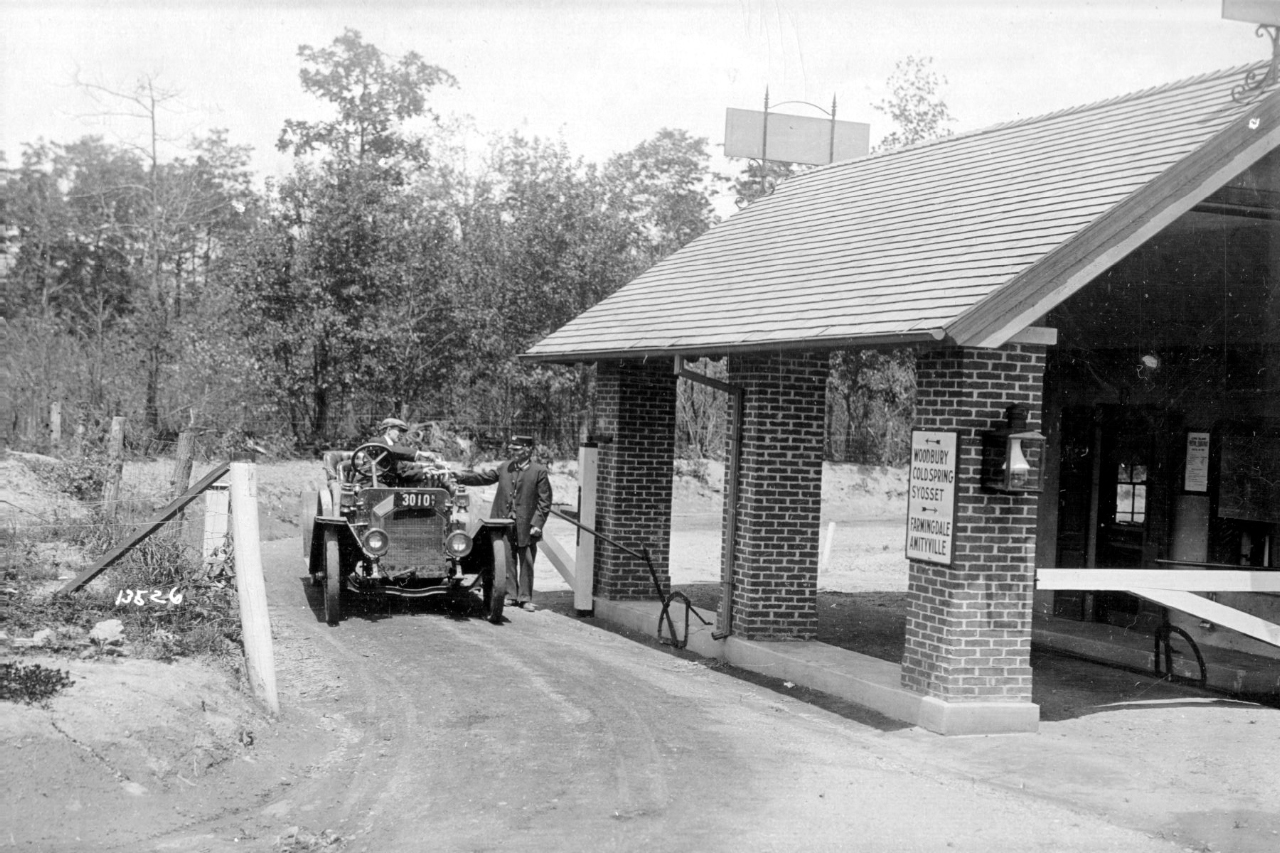
Where was the Bethpage Lodge located?
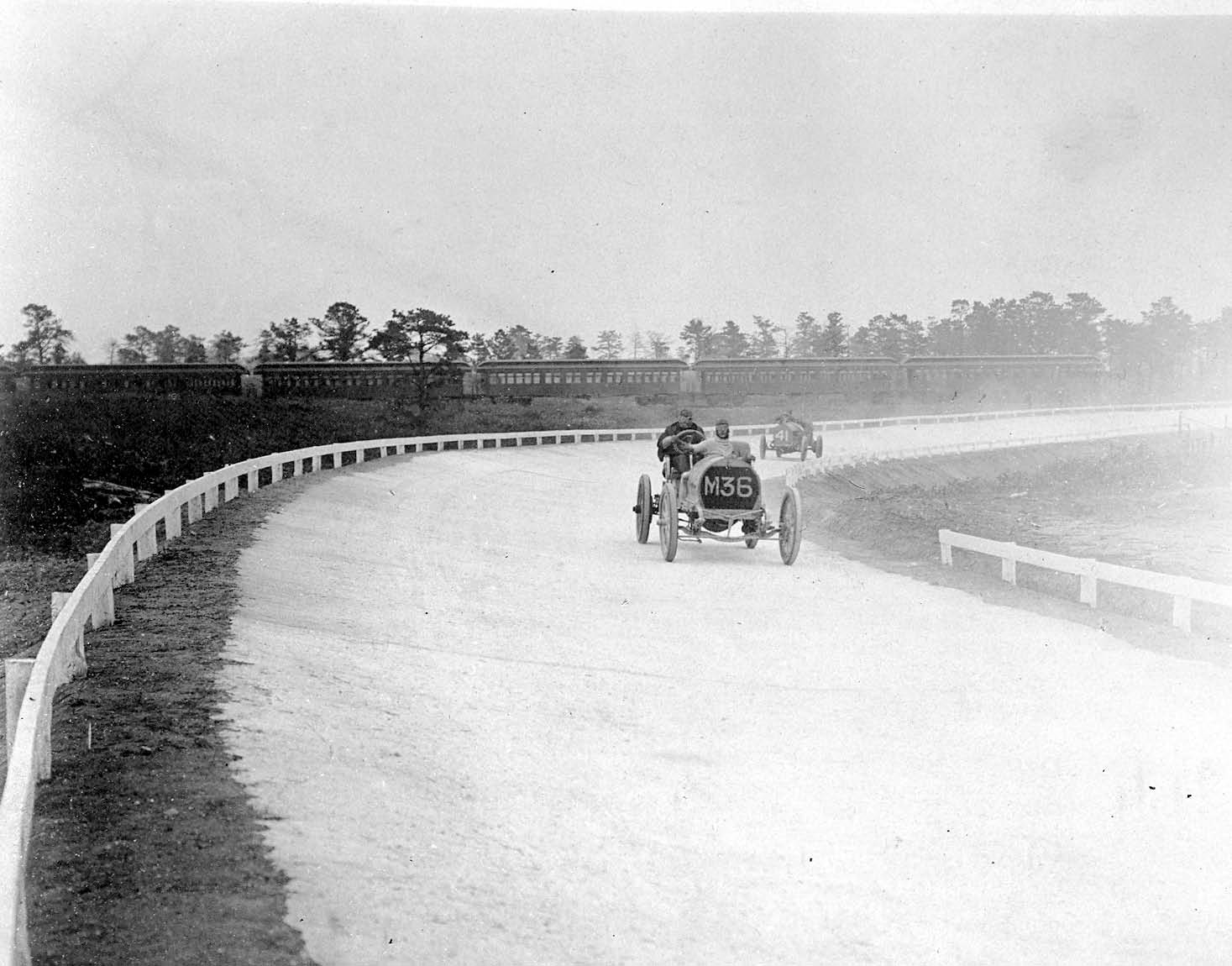
Why was there a LIRR train parked at Deadman's Curve?
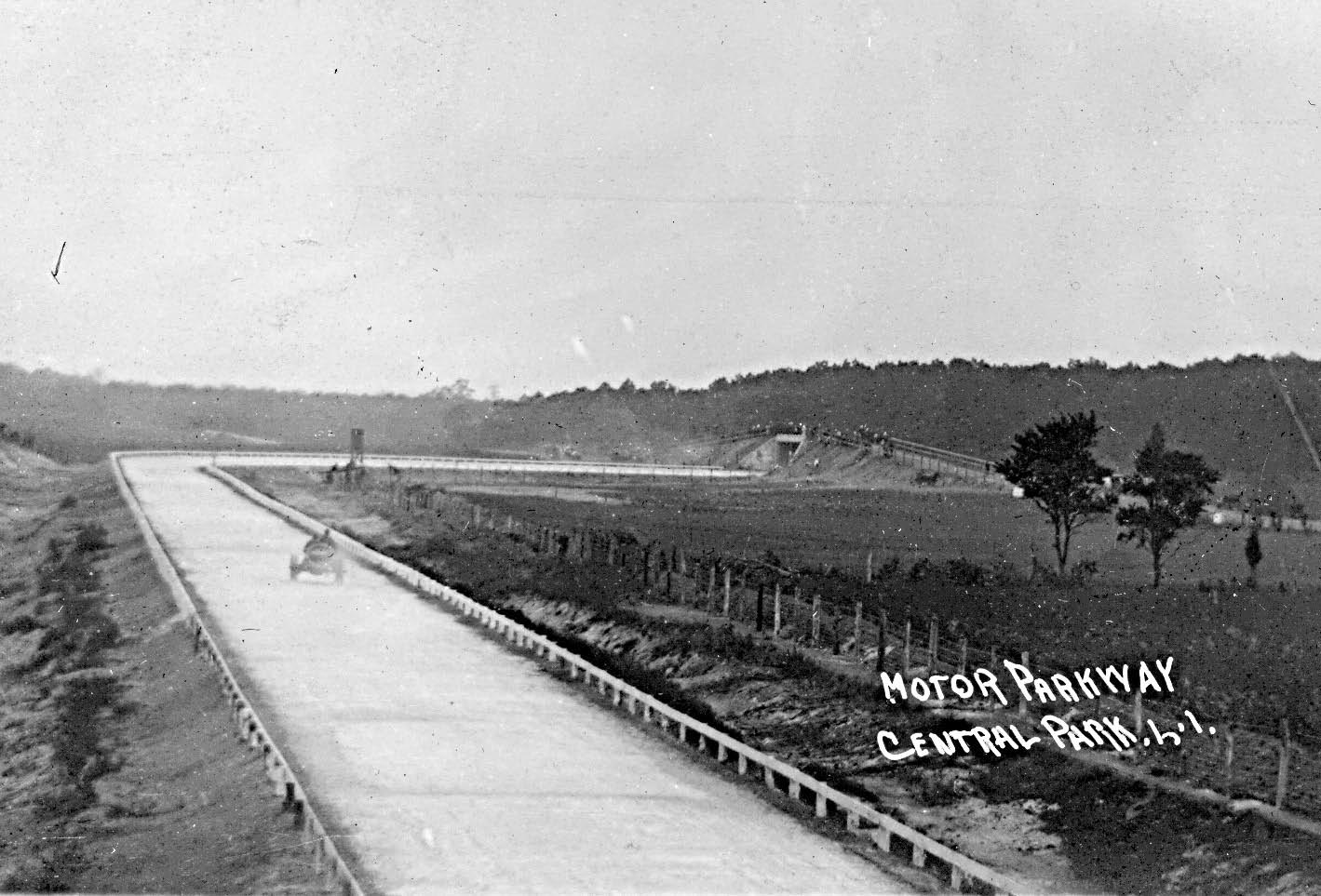
Where was the photographer standing in Bethpage for this photo?
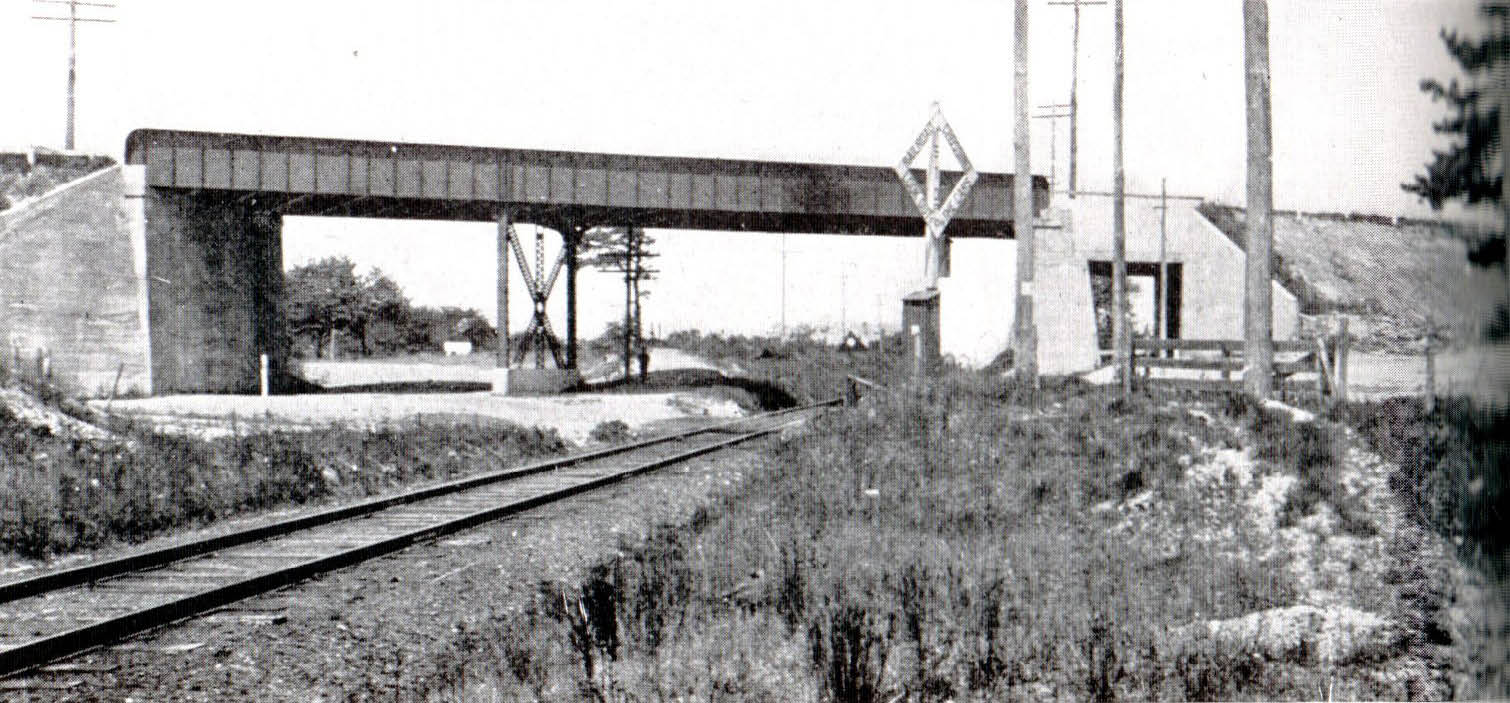
When was the longest Motor Parkway bridge taken down in Bethpage?
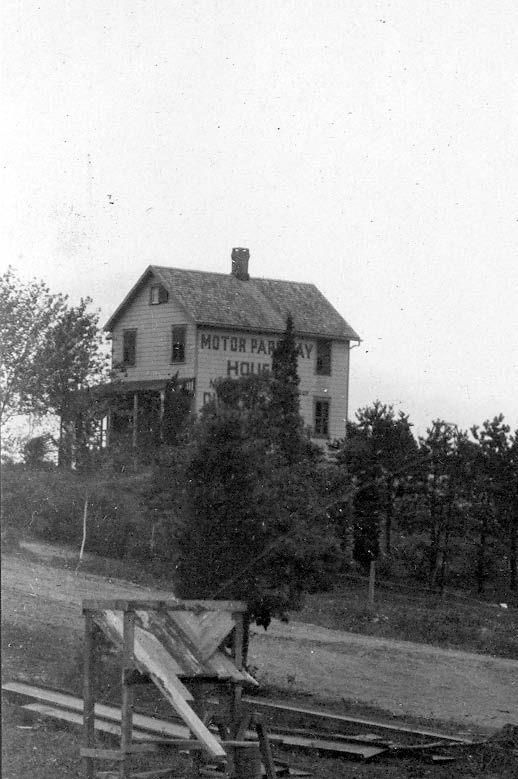
Where was the Motor Parkway House located in Bethpage?
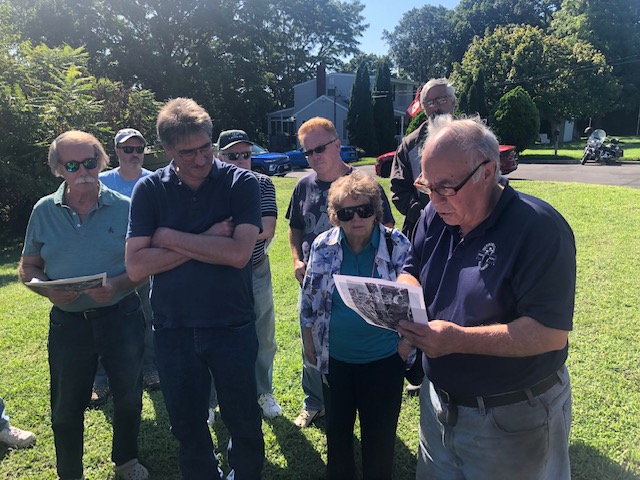
How did the Motor Parkway become a playground in the 1950s?

Comments
Deadman’s curve was a much steeper pitched bend than what is shown here, I believe.
Like so many other kids in the sixties, I grew up playing and riding my bike around Deadman’s Curve, a steeply-banked section of the parkway where it turned north to cross the LIRR tracks and head into Bethpage Stat Park near the picnic area. The ‘Curve’ was located at the north end of Windhorst Ave and Herman Ave, one block north of Wilson Lane, where I lived at #55. What happened to the curve that cut it in half? Some people speculated that it was washed out in a storm, but I disagree. I was there when the new split level houses were levelled and burned in around ‘63 for the construction of NY135 Seaford Oyster Bay Expressway. One person decided they wanted to save their house, so they dug out that section of the parkway and put the house on rollers and dragged it through the fields, right through the cut in Deadman’s Curve, and put it up on a new foundation as the last house on the street just north of Windhorst Ave. I believe it’s still there, and nobody today probably knows where this different-style house came from! I was there the day they pulled it through the Curve’s banked turn. What a shame, to destroy that historic banked curve!